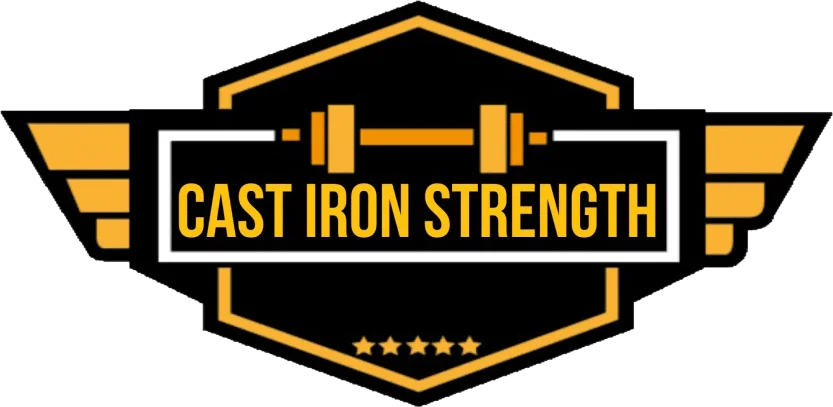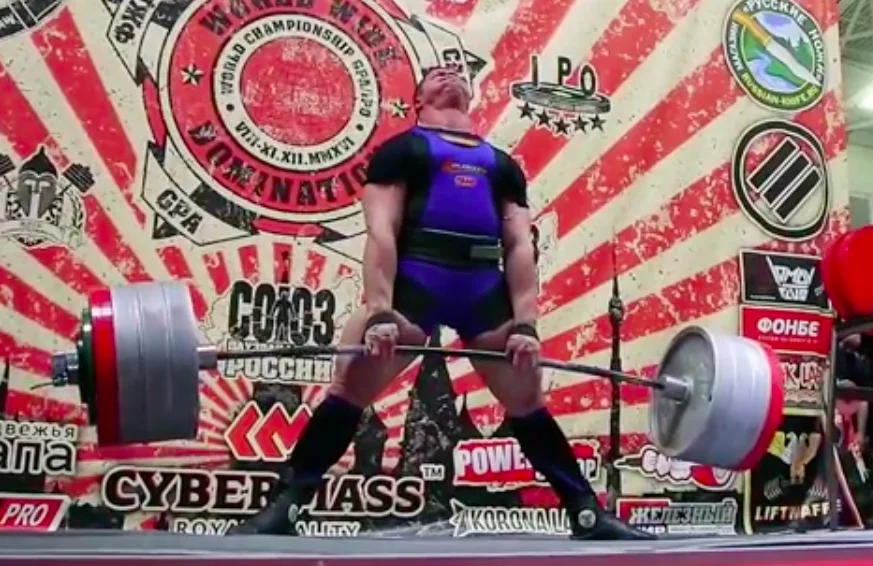One lift that has never really responded to training the same as everything else in my experience is deadlift. A lot of the sporadic nature of its trainability comes down to my from being terrible for 85% of my lifting career, however even after getting my form more serviceable it still never really responded the same way as the squat and the bench press. It breaks down a lot quicker and doing programmes like volume accumulation seems to do nothing but slow the lift down and make me tired. The same holds true for the majority of my lifters anytime I have tried to overload a deadlift in a similar way I might a squat or a bench press for a lifter all that we are normally rewarded with is the lift slowing down or the lifter getting a sore back.
Other observations watching stronger lifters like Andy Bolton or Ed Hall talking so much about speed work and how it is almost more important to deadlifting than deadlifting. My own experience is that my best runs on deadlift in the past 2 years have been superseded by longer periods of pulling 50-75% loads and concentrating on my form. Almost invariably after performing blocks like this then lifts in the 75-90% range that would have been horrendous grinders a few weeks before start to move pretty easily. I’m not pinning this on speed work far from it I wouldn’t say I buy into the speed hype I think lifters are experiencing something else when they pull light.
My Theory on why most people suck at deadlift
For me what I am experiencing or what Andy and Ed are experiencing is down to the following factors –
- Deadlift is a concentric only effort unlike the squat or the bench press where there is an eccentric component that allows the lifter to feel the weight before they have to overcome it. Feeling the weight coming down allows you to adjust your balance and establish tension relationships between joints. In essenc, it allows you to feel the movement and the load which allows you to prepare a strategy to overcome the weight of the barbell.
- Since deadlift is concentric only when lifters begin to get to weights that are difficult to get moving from the floor (the bar begins to greatly exceed the mass of the lifter) they don’t have the postural strength to overcome the inertia without being overcome by the temptation to lower their lever arm from the floor (round their back) to make getting the bar moving easier.
- Since most lifters compromise their position utilising loads as light as 75-80% they get experience much more muscle pain and stiffness (both signs of overreaching) than they do with other lifts. This makes them think the deadlift is a mystical unicorn lift that can only be performed heavy once every 5 weeks after they have made a virginal sacrifice to Thor.
- Most lifters spend literally half of the time on deadlift than they do on squat or bench since it’s missing literally half the movement (no eccentric) this means they aren’t as skilled at the movement as they might be.
- The majority of lifters out their just can’t perform the lift with any skill due to the dearth of good information available on it. That combined with the fact that most people don’t pay attention to what they are doing movement wise and rely on weigh lifted / effort as some barometer of performance rather than the execution of the lift.
How can we overcome these common problems?
Firstly, it is important to develop a mental representation of what a good deadlift looks like for most people this might be more difficult. But you should look at a video of expert dead lifters pulling submaximal loads if you can to see how their movements and their body look when they perform these lifts. Also if you can get your hands on some good deadlift tutorial videos or even better a coach who knows what they are talking about then you can really begin to develop a working understanding of what good execution looks like.
Also, you need to leave you ego at the door, this one gets trotted out a lot but in the scenario, it is definitely true you can’t train deadlift the way that I am going to be advocating and let your form break down at all. This is non-negotiable if you let yourself have a laxity or let your form break down at all when you pull then you will revert to this when you pull heavy. You must be self-disciplined and never allow yourself to perform suboptimal or poor reps on anything other than a limit lift. The earlier you let this process occur the more you are going to limit your progress.
When it comes to programming you need to spend your time on the floor doing dead stop or dead stop variations learning how to create the tension to break the bar off the floor while maintain structural integrity. This is going to mean thinking about every rep and evaluating every set, you need to disassociate the numbers you are pulling from the floor with your deadlift strength this might seem counter intuitive, no this is counter intuitive but you need to make the mental disconnect it will make developing the skill easier and take away a lot of the problems that your ego can crop up.
You will spend your time developing strength in eccentric/concentric movements that utilise the same stance you use in deadlift. This should allow you to push your volumes and intensities higher while maintaining good technique as you can utilise the lowering portion to practice holding your posture. Thanks to the quirk of muscles being stronger in longer positions you are also around 120% stronger lowering a weight than you are lifting a weight this should mean it is more feasible for you to hold your shape with heavier loads, but this is something you will need to develop with time.
You will be spending a lot of time or volume developing the muscle size/hypertrophy of the upper back and posterior chain utilising volume based programming and not trying to push the intensity too much. This extra work will deliberately be low key so it can assist the other work you will be doing without taking away too much recovery capital.
Key Points of the programme
- Pulling from the floor will 100% be technique focused you will not let a shit rep stand without critique and you will think about every single rep you pull from the floor and how to make it better.
- We will be utilising a mixture of RDL and touch and go deadlift to achieve the volume overload from the programme, the former rule still stands you are not to allow a shit rep anywhere in your training.
- You will be utilising a frequency of 2 as it has been shown in studies involving Norwegian powerlifting teams that deadlift does not respond in the same favourable way that squat or bench press do to frequency. 2 times per week allows enough dose and lets you leverage more recovery.
- MOVEMENT IS KING – this programme will provide an overload trust me on that but what I want you to do is to commit to having your form as good as possible in the next 6 weeks training cycle.
The Programme.
Week 1
Session 1
Deadlift – 8 sets of 4 @ 60% RM
TNG Deadlift – 3 sets of 12 @ 40% RM
Hyper – 3 sets 20
Cable Pull Through or KB Swing (using your deadlift stance) – 3 sets 20
Session 2
RDL – 3 sets 12 @ 40% RM
Pause Deadlift – 8 sets 4 @ 60% RM
Hyper – 3 sets 20
Cable Pull Through or KB Swing (using your deadlift stance) – 3 sets 20
Week 2
Session 1
Deficit Deadlift – 8 sets of 3 @ 65% RM
TNG Deadlift – 3 sets of 10 @ 45% RM
Hyper – 3 sets 20
Cable Pull Through or KB Swing (using your deadlift stance) – 3 sets 20
Session 2
RDL – 3 sets 10 @ 45% RM
Deadlift – 8 sets 3 @ 65% RM
Hyper – 3 sets 20
Cable Pull Through or KB Swing (using your deadlift stance) – 3 sets 20
Week 3
Session 1
Deadlift – 7 sets of 3 @ 70% RM
TNG Deadlift – 3 sets of 8 @ 50% RM
Hyper – 3 sets 20
Cable Pull Through or KB Swing (using your deadlift stance) – 3 sets 20
Session 2
RDL – 3 sets 10 @ 50% RM
Pause Deadlift – 7 sets 3 @ 70% RM
Hyper – 3 sets 20
Cable Pull Through or KB Swing (using your deadlift stance) – 3 sets 20
Week 4
Session 1
Deficit Deadlift – 8 sets of 4 @ 65% RM
TNG Deadlift – 3 sets of 10 @ 50% RM
Barbell Hyper – 3 sets 10
Cable Pull Through or KB Swing (using your deadlift stance) – 3 sets 15
Session 2
RDL – 3 sets 10 @ 50% RM
Deadlift – 7 sets 3 @ 70% RM
Barbell Hyper – 3 sets 10
Cable Pull Through or KB Swing (using your deadlift stance) – 3 sets 15
Week 5
Session 1
Deadlift – 7 sets of 3 @ 70% RM
TNG Deadlift – 3 sets of 10 @ 55% RM
Barbell Hyper – 3 sets 10
Cable Pull Through or KB Swing (using your deadlift stance) – 3 sets 15
Session 2
RDL – 3 sets 10 @ 55% RM
Pause Deadlift – 7 sets 3 @ 70% RM
Hyper – 3 sets 20
Cable Pull Through or KB Swing (using your deadlift stance) – 3 sets 20
Week 6
Session 1
Deficit Deadlift – 6 sets of 3 @ 75% RM
TNG Deadlift – 3 sets of 8 @ 60% RM
Barbell Hyper – 3 sets 10
Cable Pull Through or KB Swing (using your deadlift stance) – 3 sets 15
Session 2
RDL – 3 sets 8 @ 60% RM
Deadlift – 6 sets 3 @ 75% RM
Hyper – 3 sets 20
Cable Pull Through or KB Swing (using your deadlift stance) – 3 sets 20
Week 7
Session 1
Deadlift
2 sets 5 @ 65%
2 sets 4 @ 75%
2 sets 3 @ 85%
Barbell Hyper – 3 sets 10
Cable Pull Through or KB Swing (using your deadlift stance) – 3 sets 15
Session 2
Deadlift
2 sets 5 @ 65%
2 sets 4 @ 75%
2 sets 3 @ 85%
Barbell Hyper – 3 sets 10
Cable Pull Through or KB Swing (using your deadlift stance) – 3 sets 15
Week 8
Session 1
Deadlift
2 sets 3 @ 70%
2 sets 4 @ 80%
2 sets 3 @ 90%
Barbell Hyper – 3 sets 10
Cable Pull Through or KB Swing (using your deadlift stance) – 3 sets 15
Session 2
Deadlift
2 sets 3 @ 70%
2 sets 3 @ 80%
2 sets 3 @ 90%
Barbell Hyper – 3 sets 10
Cable Pull Through or KB Swing (using your deadlift stance) – 3 sets 15
Week 9 – Test new max or start new training cycle.
Hope this programme helps, I would really like to see how you get on with this programme so please email me or message me with your experiences.
Marc

















